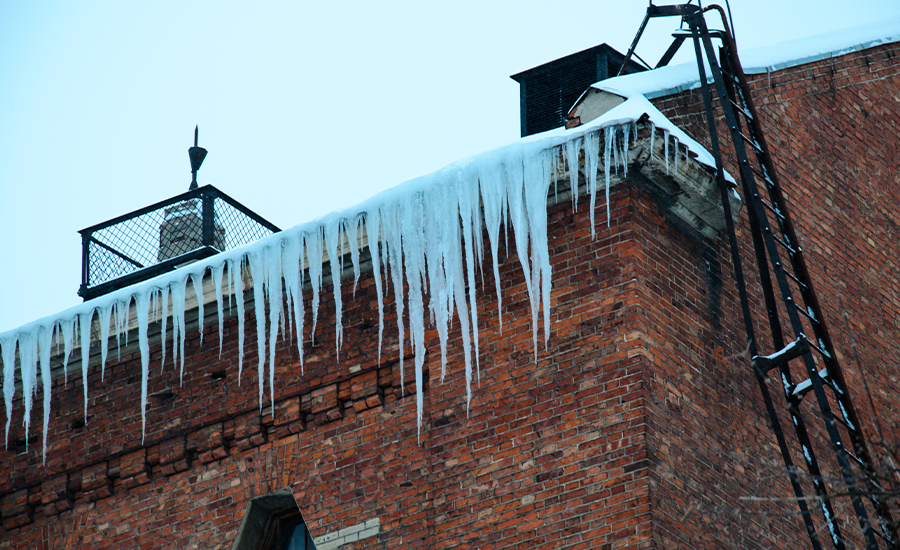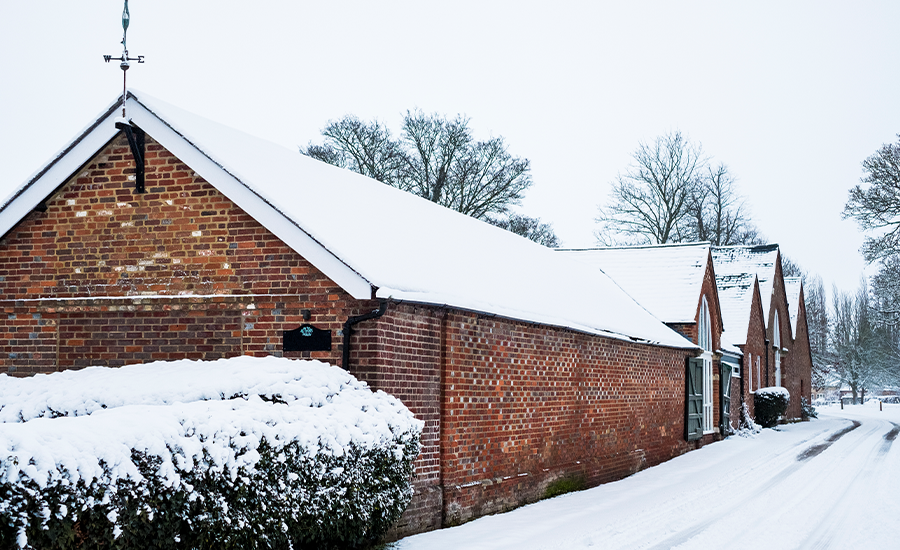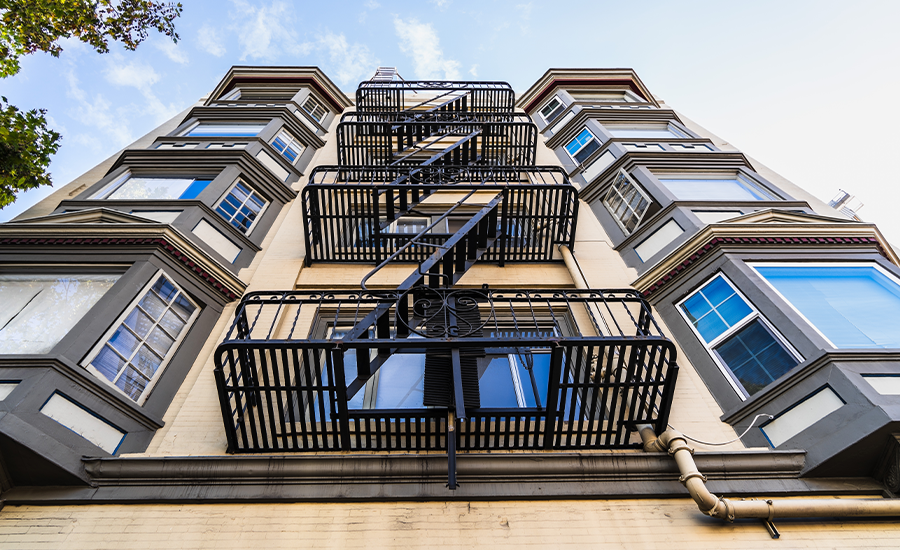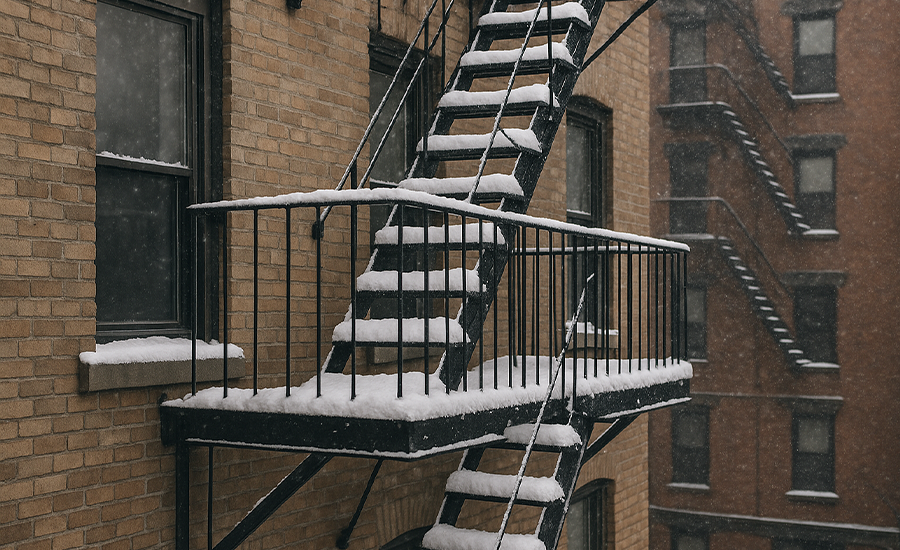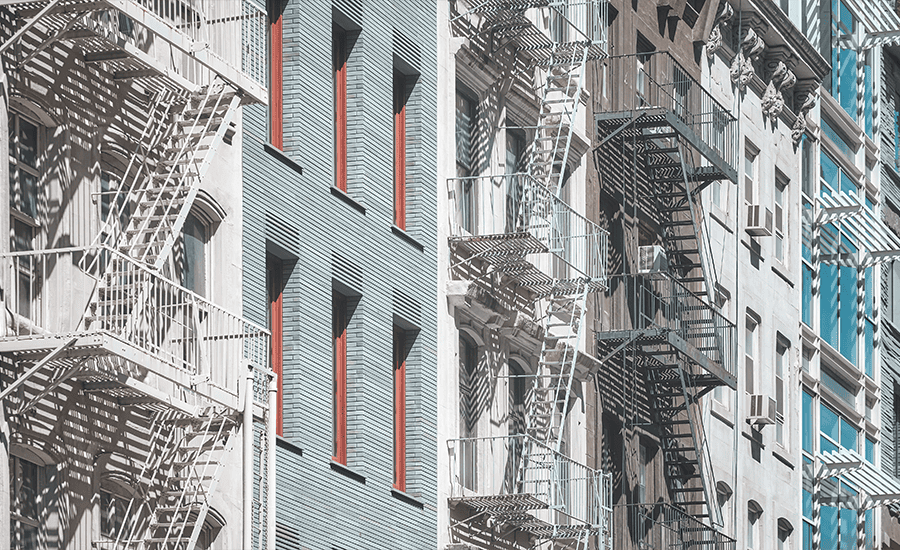Pointing is crucial to repairing and strengthening the mortar joints between bricks or stones. Over time, the mortar can crack and break down, so the old, damaged mortar is removed with tools, and fresh mortar is applied in its place, matching the original as closely as possible. This process is also known as repointing or mortar joint repair. Several types of pointing techniques are used in construction, including flush pointing, weathered pointing, keyed pointing, and tuckpointing, each serving a specific Purpose based on the needs of the structure.
What Is Brick Pointing According to Sardar Restoration Corp?
We believe ‘Expert brick pointing restores mortar joints, enhancing the structure and preserving integrity.’
What is Brick Pointing?
Brick pointing, or repointing is the process of repairing or renewing the mortar joints in brick or stone masonry. The mortar in these joints erodes due to exposure to weather and moisture, and aging affects the strength of the structure, causing more damage.
Environmental factors for brick pointing, such as extreme weather conditions, moisture, and pollutants can accelerate mortar deterioration, requiring more frequent maintenance and repairs. When this occurs, the old mortar material is chipped, and the joints are pointed with new mortar to give functional and aesthetic advantages to a building. In addition to repointing, this technique is also known as mortar joint repair, masonry repair, or, in some cases, tuckpointing, depending on the method used.
Relationship Between Brick Pointing and Masonry
Brick-pointing therefore is an essential element of brick masonry. Brick masonry can be defined as the method of building walls, facades, etc, with bricks cemented by mortar. Mortar joints of the bricks may decay gradually from the exposure to weathering elements, wear and tear, or other environmental factors.
If new or the existing mortar has failed, then repointing or the process by which the mortar joints are renewed or repaired is critical to the integrity and service life of brick masonry. Hence, it is appropriate that water penetration, growth of the mold, and structural compromise ensue as a result of non-repointing of the weakened mortar lines.
Repointing keep the masonry; intact, durable and aesthetic by replacing the broken mortar with fresh mortar that effectively bonds the bricks. Consequently, brick pointing directly contributes to the well-being of masonry and is, therefore, a crucial service that must be provided to maintain the strength and aesthetic value of buildings with a brick exterior.
Purpose of Brick Pointing
The principal reason for brick pointing is to reinforce the sturdiness of the construction of brickwork and its ability to withstand different climatic changes. Eventually, the mortar joints will deteriorate, exposing the structure to more water and air, leading to mold, rust, and deteriorating bricks. By repointing these mortar joints, pointing is a technique that stops water from accessing the masonry structure and causing more deterioration. Besides, pointing adds beauty to the building because it masks joint spaces’ irregularities, ensuring straight and smooth mortar lines. It is mainly used for historic buildings or structures that require the appearance to be preserved at all times. Read more.

Common Types of Pointing
There are several types of pointing techniques, each suited to specific conditions and aesthetic preferences:
Flush Pointing
It is applied flat to the surface of bricks to provide the smooth and neat appearance of mortar on walls.
As flush pointing is quite technical, you need to know it in detail, Click here to learn more.
Weathered Pointing
It is uniquely styled because while its top appears flush with the bricks, the mortar slows outwards to provide the joint’s water-shedding feature.
To learn more about how this method protects your masonry, read on.
Keyed Pointing
The mortar is pressed into the joint to form a key, providing extra strength and stability.
Read in detail by clicking here.
V-Grooved Pointing
A V-shaped groove is created in the mortar to help further direct water away from the joint.
A V-shaped groove directs water away from joints.
Recessed Pointing
Recessed pointing entails protracting the mortar behind the plane of the thin face of the brick, giving it a depressed appearance. This style is useful in helping to wash water off the wall because it is highly durable, and in addition, it offers a professional appearance.
To read in detail, click here.
Struck Pointing
Struck pointing is when the mortar is put down and then hit back at an angle, mainly into the side of the brick. This technique assists in guiding the water away from the wall to minimize erosion of the wall by weather conditions.
Discover more about this technique by clicking here.
Beaded Pointing
Beaded pointing has the shape of beads along the joint of the mortar. It also gives a finishing look to the bricks, giving it weathering and structural resistance to the walls.
Click here to understand how beaded pointing works.
Is Repointing Brick Difficult?

Repointing can be challenging, and it’s daunting to know when you need repointing, especially for older buildings or structures with intricate or damaged joints. This involves careful joint removal to avoid damaging the surrounding bricks while replacing the deteriorated mortar. The difficulty of repointing depends on factors like the structure’s age, mortar condition, and the precision required to match the original finish. This is why repointing is often best left to professionals, particularly for large or complicated projects.
Sardar Restoration Corp’s Definition of Repointing
Repointing is the process of renewing the mortar between bricks to restore the structural integrity of masonry. Sardar Restoration Corp specializes in repointing services, ensuring long-lasting protection against water penetration and structural failure.
Do Bricklayers Do Pointing?
Yes, bricklayers are typically the professionals who perform pointing and repointing. They are skilled in masonry and understand how to repair mortar joints properly. Bricklayers will ensure that the appropriate type of mortar is utilized, apply it properly, and ensure that the joints are finished to the style of the set bricks. They have the capability to undertake the technical and creative execution of the project, including the chiseling of the mortar joint and the finishing.
However, while a lot of homeowners think they may undertake the repointing on their own, this is virtually advisable only for simple projects and the actual repointing job is better left in the hands of a professional.
Weather Conditions Suitable for Brick Pointing
The weather plays a key role in the success of brick pointing. The best conditions for repointing are:
- Dry weather: The weather must be dry for a few days before and after the pointing to allow the new mortar to set properly. Too much moisture can prevent the mortar from curing correctly.
- Moderate temperature: Ideal temperatures for pointing are between 40°F and 85°F (4°C to 29°C). This range allows the mortar to cure correctly without being affected by extreme heat or cold.
- Avoiding extreme cold or rain: Pointing should not be done during rainy or freezing conditions, as this can cause the mortar to fail, crack, or set improperly.
Remember,
timely brick pointing prevents water damage, enhances property value, improves insulation, and ensures long-term structural integrity.
Mortar Used for Pointing
When performing pointing work, lime mortar and cement mortar are the most commonly used options. The choice of mortar depends on the project and the condition of the structure. Below is a breakdown of the materials used and their respective mixing ratios.
Lime Mortar
Lime mortar is typically used for pointing in older buildings. It is chosen for its versatility, permeability, and absorbency capacity, which aid in maintaining historical structures.
- Materials Used: Fat lime and fine sand
- Mixing Ratio: Fat lime in a ratio of 1:1 to fine sand
- Usage: Very suitable for restoration of older brickwork or stonework.
Cement Mortar
Cement mortar is more modern and more substantial, offering durability and quick setting. It is typically used for repairs in more exposed or structurally demanding areas.
- Materials Used: Cement and fine sand
- Mixing Ratio: 1 part cement to 2 or 3 parts sand
- Usage: Suitable for more durable repairs or when additional strength is required
Mortar Comparison Chart
| Mortar Type | Materials | Mixing Ratio | Best For |
|---|---|---|---|
| Lime Mortar | Fat lime, Fine sand | 1:1 (lime: sand) | Older buildings, conservation work |
| Cement Mortar | Cement, Fine sand | 1:2 or 1:3 (cement: sand) | Durable repairs, high-moisture areas |
This chart clearly compares the materials and mixing ratios for lime and cement mortar, helping you decide which is most suitable for your pointing needs.
Why Choose Sardar Restoration Corp For Brick Pointing?
For whoever needs our services, Sardar Restoration Corp is the best company providing full services in repairing and beautifying your homes through services like brick pointing. Here’s why we stand out as the best choice for your brick-pointing needs:
Expertise in All Types of Pointing
Whether it is tuckpointing, repointing, or brick restoration, our team is unbeatable in every aspect of brick pointing. We make particular strokes to reinforce mortar joints, which helps weather problems like water seepage and pest invasion.
Long-Lasting Protection
The brick pointing we offer is long-lasting. Historical structures require lime mortar, and new construction requires cement mortar. Thus, we offer a specific service for your house. Our work maintains the integrity of any brickwork and ensures it does not need to be replaced in the future.
Understanding Local Needs
We know that different areas require different approaches. From Manhattan’s historic facades to Westchester’s older homes and Queens’ humid climate, we tailor our services to meet the specific challenges of your location. Our careful application ensures that your masonry remains secure through harsh winters, humid summers, and everything in between.
Preserving Property Value
As earlier noted, whenever you complete brickwork, there are possibilities of damage. However, repointing adds value to your asset. In a Brooklyn brownstone restoration or in other similar commercial buildings, pointing plays an important role in giving your building a better, more improved façade and structure, making it more appealing to any potential buyer.
Professional and Efficient Service
This process is always complex; however, our team possesses all the necessary skills to carry it out efficiently. We ensure the timely delivery of projects by using appropriate materials, tools, and methods to get the job done. Also, the job site will be clean, and the workers will do all they can to make sure they do not inconvenience you in any way.
Cost-Effective and Reliable
We further reasoned that quality should not be expensive. When hiring our company, SARDAR RESTORATION CORP, we offer competitive and fair prices and reliability for the long term while standing by our word-of-mouth guarantee. We make sure that your brick-pointing investment will work to protect your premises for some time now.
Sardar Restoration Corp is the right choice for brick pointing that will strengthen your building’s structural integrity, beautify your property, and offer a reliable shield. Contact us for a free quote, and allow our experienced professionals to demonstrate just how we can help enhance and maintain your building. Check our service areas to see if we operate in your location.
Wherever you are, our services are tailored to meet local needs. Contact us today at (+1) 917-355-8556 or sardarrestoration@gmail.com, or visit us at 2770 Fish Ave, Bronx, NY 10469, United States. Let us bring excellence to your next project!
FAQs
How often should brick be repointed?
Brick should generally be repointed every 20 to 30 years, depending on the climate and the condition of the mortar joints. Extreme weather conditions and wear can cause mortar to deteriorate faster, requiring more frequent repointing.
The cost of brick repointing varies based on materials, labor, and project size. But how often should you repoint bricks to prevent costly damage? Find out in our detailed guide: how often should brick be repointed?. For a breakdown of expenses, check out how much does it cost to repoint brick?.
What is the difference between tuckpointing and brick pointing?
Tuckpointing is a specialized type of brick pointing where a fine line of mortar is added to create a neat, straight joint, often for aesthetic purposes. Brick-pointing, however, involves general repairing or replacing damaged mortar joints without focusing on fine detailing.
While both tuckpointing and brick pointing involve mortar joint repairs, their techniques and purposes differ significantly. To understand the key differences in detail, read our full comparison of tuckpointing vs. brick pointing.
How long should brick pointing last?
Brick-pointing can last anywhere from 20 to 30 years, depending on factors like weather, the materials used, and the quality of the original mortar. Correctly done, it can extend the life of a structure and prevent further damage.
Curious about what affects the lifespan of brick pointing and how to make it last longer? Get the full details in our guide how long should brick pointing last?.
How deep should brick pointing be?
The depth of brick pointing typically ranges from ½ inch to 1 inch, depending on the condition of the existing mortar and the building’s needs. It’s important to remove enough old mortar to ensure a secure bond with the new mortar.
What happens if you don’t tuckpoint brick?
Failing to tuckpoint brickwork can lead to water infiltration, structural deterioration, and potential pest infestations. Over time, the mortar will erode, weakening the brickwork and leading to more costly repairs.
Delaying tuckpointing can weaken brickwork and lead to costly repairs. Learn the risks and solutions here.
What is the difference between mortar and pointing?
Mortar is the material used to bind bricks or stones, while pointing refers to repairing or renewing the mortar joints in existing brickwork. Pointing involves applying fresh mortar to the joints after removing the old mortar.
For a more detailed breakdown, explore the key differences between mortar and pointing.
Do bricklayers do pointing?
Yes, bricklayers are skilled in pointing and are typically the professionals who perform this work. They are trained to remove damaged mortar and apply new mortar to restore the masonry.
Want to know how bricklayers ensure strong and precise mortar joints? Explore our detailed guide on bricklayers and pointing.
What is the best material for brick pointing?
The best material for brick pointing depends on the type of building and its needs. Lime mortar is often preferred for older structures due to its breathability, while cement mortar is ideal for modern buildings due to its strength and durability.
Choosing the right mortar is essential for durability. Learn more about the best materials for brick pointing.
How is brick repointing done?
Brick repointing involves removing the old, damaged mortar from the joints using a hammer, chisel, or power tool. After cleaning the joints, fresh mortar is applied, filling the gaps and ensuring a secure bond with the surrounding bricks.
For a complete step-by-step guide, explore our detailed breakdown of how brick repointing is done.
Can brick-pointing reduce energy costs?
Yes, brick pointing can help reduce energy costs by sealing gaps in the mortar joints, preventing drafts, and improving the building’s insulation. A well-sealed structure requires less energy to heat or cool, resulting in lower utility bills.
Learn how brick-pointing cuts energy costs effectively in our detailed guide.




